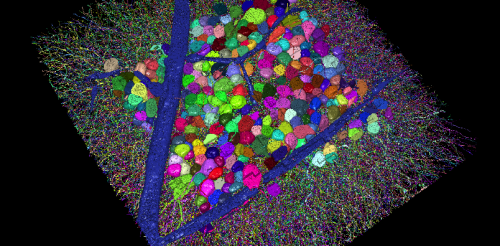Main Page
From Eyewire
Revision as of 17:28, 30 September 2015 by Miopio (Talk | contribs) (Protected "Main Page" ([Edit=Allow only administrators] (indefinite) [Move=Allow only administrators] (indefinite)))
|
|
|
|
Quick Links
 |
The Game Sign up to play |
|
CellMuseum Gallery of reconstructed EyeWire neurons |
|
Retinal Neuron Classification Collaborative platform for retinal cell classification |
 |
Blog EyeWire blog |
|
The Seung Lab What we do at Princeton |
 |
Seung Lab Publications List of published papers |
| |
Facebook EyeWire on Facebook |
|
Twitter EyeWire on Twitter |
 |
Forums Forum for EyeWire players |
